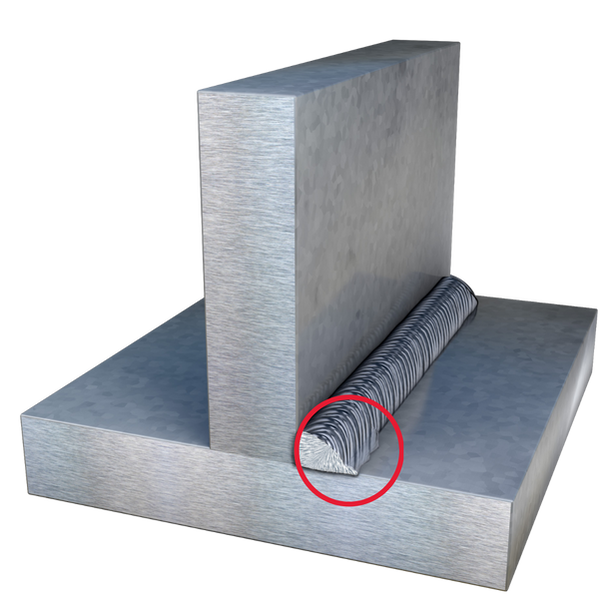A Comprehensive Guide to Identifying, Stopping, and Repairing Undercut Welding Troubles in Your Welding Projects
In the realm of welding, running into undercut concerns is a common challenge that can compromise the structural integrity and general top quality of your welding projects. Keep tuned as we discover the crucial parts of recognizing, stopping, and taking care of undercut welding issues, supplying you with valuable insights and approaches to raise your welding skills to the next degree.
Typical Reasons of Undercut Welding
Undercut welding, a common issue in welding processes, can be created by different elements that need to be very carefully identified and addressed to ensure the integrity of the weld joint. One of the main reasons of undercut welding is too much heat input.
An additional common reason for undercut welding is improper welding strategy. Inadequate control of the soldering iron or gun, incorrect angle or distance in between the workpiece and the lantern, or irregular travel rate can all contribute to the formation of undercut. Additionally, using the incorrect welding consumables or electrode dimension for a certain joint arrangement can bring about undercut problems. Identifying these root creates and carrying out restorative procedures is crucial in avoiding and rectifying undercut welding problems in welding tasks.
Identifying Undercut in Welds

To recognize undercut accurately, correct lights and zoom tools are vital to check the weld joint thoroughly. Utilizing devices such as a welding scale or a magnifying glass can help in spotting even the tiniest undercut flaws. In addition, running a finger or a finger nail along the weld joint can often expose undercut, as the surface might feel unequal or have a dip where the undercut exists.
Safety Nets for Undercut
Having a deep understanding of the reasons of undercut in welds permits for the execution of efficient preventative steps to maintain weld quality and stability. These setups ought to be enhanced to protect against too much warmth input, which can lead to undercut formation.

Strategies for Repairing Undercut

Enhancing the welding present or reducing the travel rate can aid fill up in the undercut. In addition, changing the welding technique from a push to a drag or vice versa can additionally aid minimize undercut.
Another strategy is to make use of a weaving motion while welding to make certain correct sidewall fusion and fill in the undercut. By oscillating the welding arc from side to side within the weld joint, the welder can transfer extra filler product right into the undercut locations, effectively getting rid of the issue.
Furthermore, grinding out the undercut and rewelding the joint can be a viable service for more extreme undercut problems - Preventing weld undercut. This procedure includes removing the undercut area, preparing the base metal, and after Look At This that rewelding the joint with appropriate welding parameters and methods to avoid undercut from returning

Specialist Tips for Staying Clear Of Undercut
Making use of appropriate welding methods and preserving control over essential welding specifications are essential strategies for welders intending to stop undercut in their weld joints. One specialist suggestion for preventing undercut is to make sure proper joint preparation. This entails cleaning up the base metal thoroughly to eliminate any kind of impurities that might result in damage formation. Additionally, picking the ideal welding procedure and filler steel for the particular application can assist stop undercut. Welders need to also pay very close attention to the welding present and voltage settings, ensuring they are within the advised variety to stay clear of overheating and possible undercut. Keeping a constant travel speed throughout the welding process is one more vital idea to avoid undercut. By relocating at a constant pace, welders can ensure correct combination and decrease the probability of undercut formation. Finally, evaluating the weld bead our website after completion can help identify any kind of indications of undercut at an early stage, read enabling immediate restorative action to be taken.
Final Thought
Finally, identifying, protecting against, and fixing undercut welding problems in your welding projects is essential for guaranteeing sturdy and strong welds. Preventing weld undercut. By understanding the usual sources of undercut, having the ability to identify it in welds, carrying out safety nets, and utilizing appropriate strategies for repairing undercut, you can avoid potential issues and produce high-quality welds. Following specialist pointers for avoiding undercut can help you boost your welding abilities and produce much better outcomes in your tasks
Undercut welding, an usual problem in welding processes, can be caused by different factors that need to be carefully identified and dealt with to guarantee the integrity of the weld joint. In addition, running a finger or a fingernail along the weld joint can in some cases reveal undercut, as the surface area may feel uneven or have a dip where the undercut exists.
Making use of correct welding techniques and keeping control over vital welding criteria are essential methods for welders aiming to stop undercut in their weld joints.In final thought, identifying, avoiding, and dealing with undercut welding issues in your welding projects is crucial for ensuring solid and resilient welds. By understanding the common causes of undercut, being able to determine it in welds, executing preventive procedures, and making use of appropriate methods for taking care of undercut, you can avoid potential problems and produce high-quality welds.